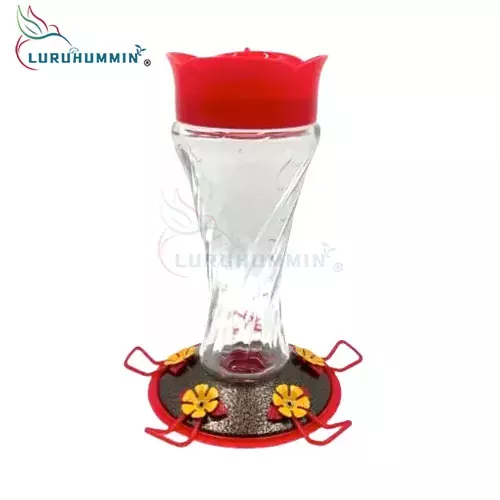Tips and Tricks for Maintaining Your Hummingbird Feeder
2024-12-27
A hummingbird feeder is a wonderful addition to any garden, inviting these tiny, energetic birds to visit and linger. However, maintaining your feeder is crucial to ensuring the health and safety of your avian visitors. Here’s how to keep your feeder in top condition and your hummingbirds happy.

Why Maintenance Matters
Neglected feeders can become breeding grounds for mold, bacteria, and fermented nectar, all of which can harm hummingbirds. Regular cleaning and proper care will keep your feeder safe and welcoming.
Cleaning Your Feeder
1. Frequency: Clean your feeder every 2-3 days, especially in warm weather, to prevent nectar spoilage. In cooler climates, cleaning once a week may suffice.
2. Tools: Use a bottle brush, small toothbrush, or pipe cleaner to reach all parts of the feeder.
3. Cleaning Solution: Wash with hot water and mild dish soap. Avoid harsh chemicals that could leave residues.
4. Rinse Thoroughly: Ensure no soap residue remains before refilling the feeder.
Refilling the Nectar
- Homemade Nectar Recipe: Mix one part white granulated sugar with four parts water. Boil the mixture to dissolve the sugar, then let it cool completely before filling the feeder.
- Storage: Store unused nectar in the refrigerator for up to a week.
- Avoid Additives: Do not use honey, artificial sweeteners, or red food dye, as they can harm hummingbirds.
Preventing Common Issues
- Ants and Bees: Use ant moats or bee guards to keep insects away from the feeder.
- Mold and Mildew: Regular cleaning and keeping the feeder out of direct sunlight will minimize growth.
- Spillage: Opt for feeders with leak-proof designs to reduce mess and waste.
Seasonal Tips
- Spring and Summer: Increase feeding frequency as hummingbirds prepare for migration.
- Fall and Winter: If hummingbirds are present year-round in your area, continue feeding but monitor nectar levels closely, as they may consume less in colder months.
Enhancing Your Feeding Station
- Add Multiple Feeders: Reduce competition by spacing feeders throughout your garden.
- Plant Native Flowers: Attract more hummingbirds by incorporating nectar-rich plants such as trumpet vine, salvia, and bee balm.
- Provide Perches: Place feeders near trees or shrubs to give birds a place to rest between feedings.
With proper maintenance and thoughtful care, your hummingbird feeder will become a reliable source of nourishment for these remarkable birds. In return, you’ll be rewarded with their mesmerizing visits and the joy they bring to your outdoor space.


